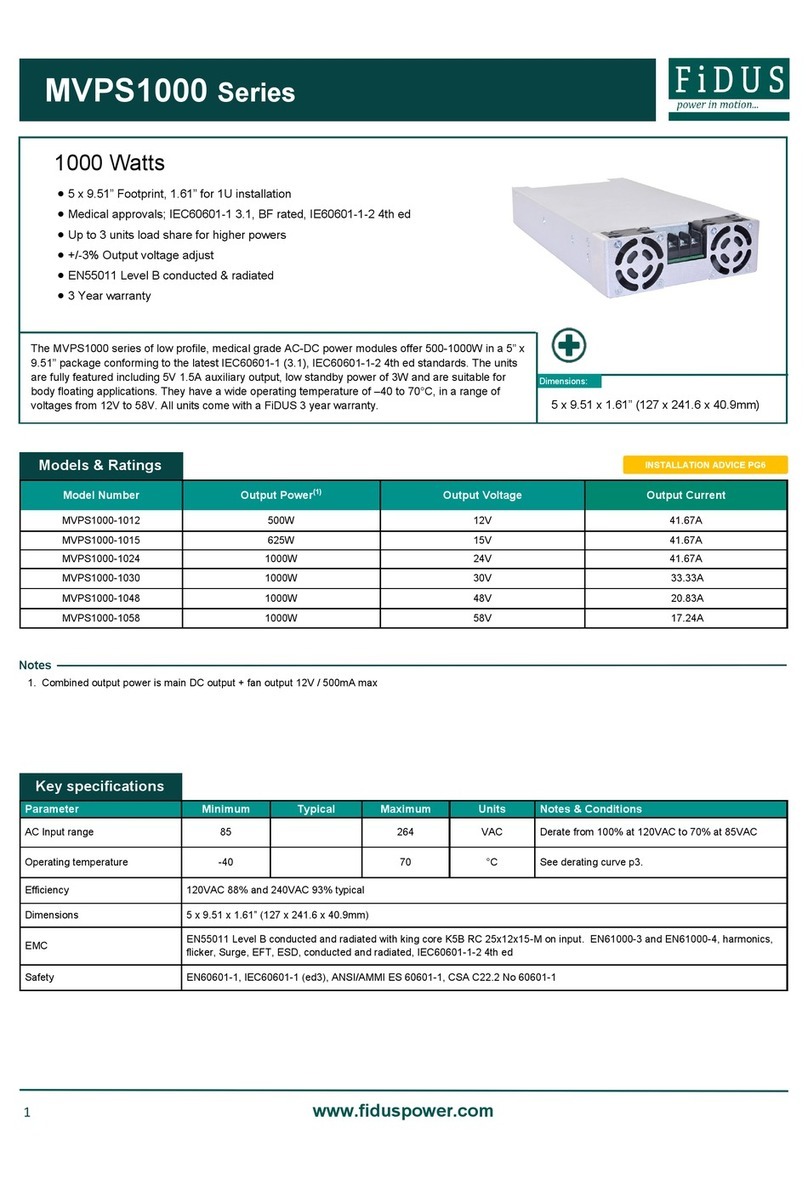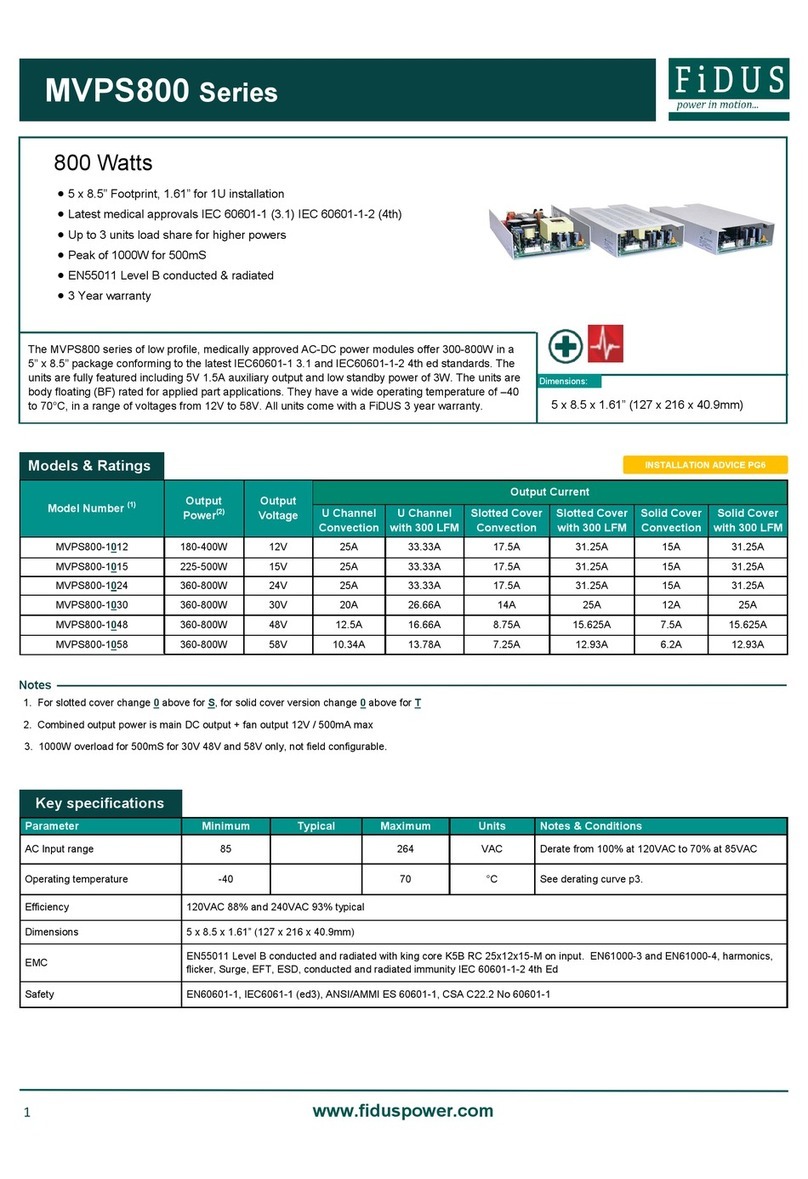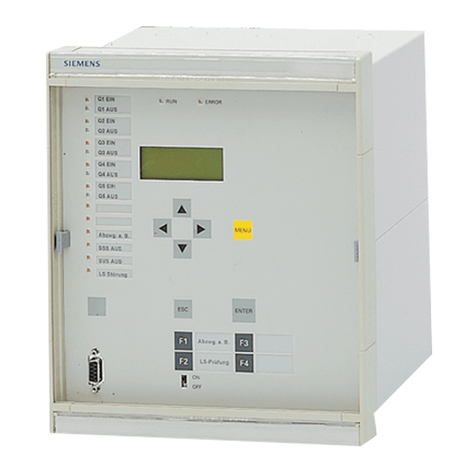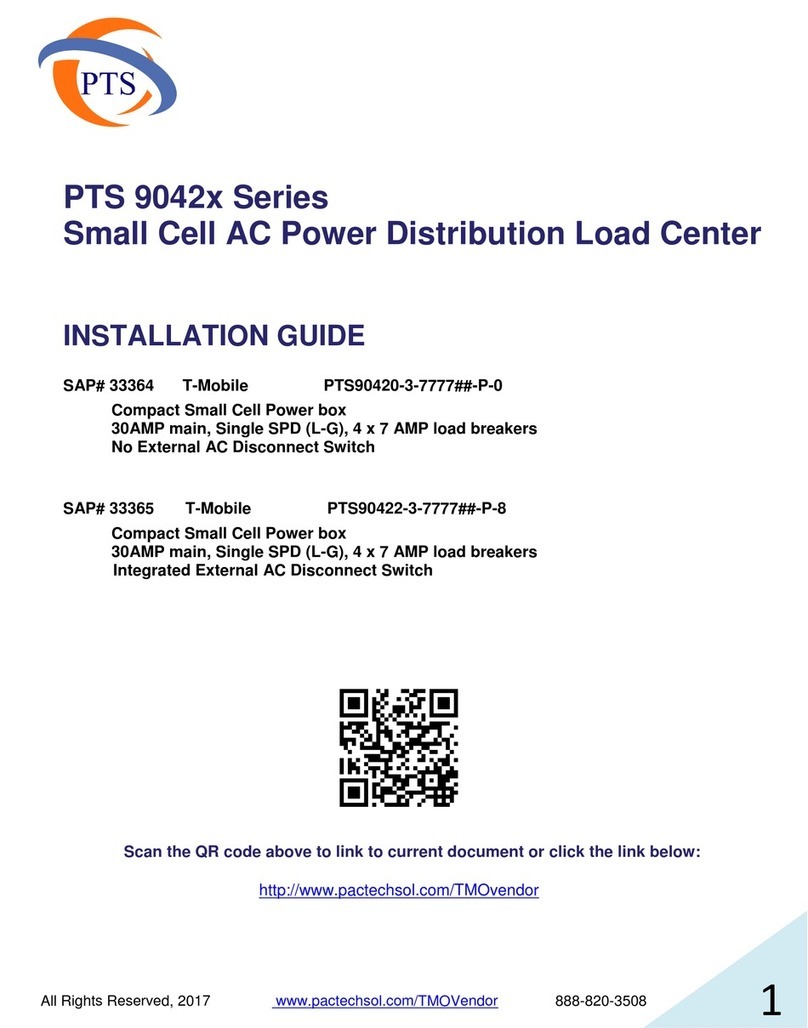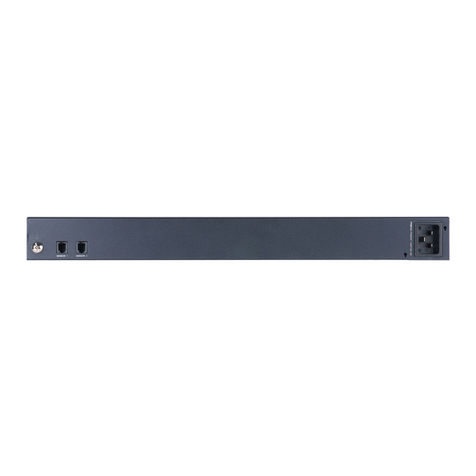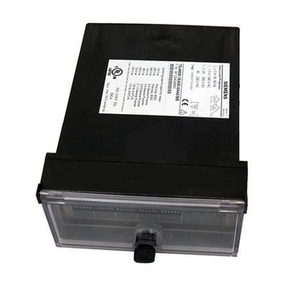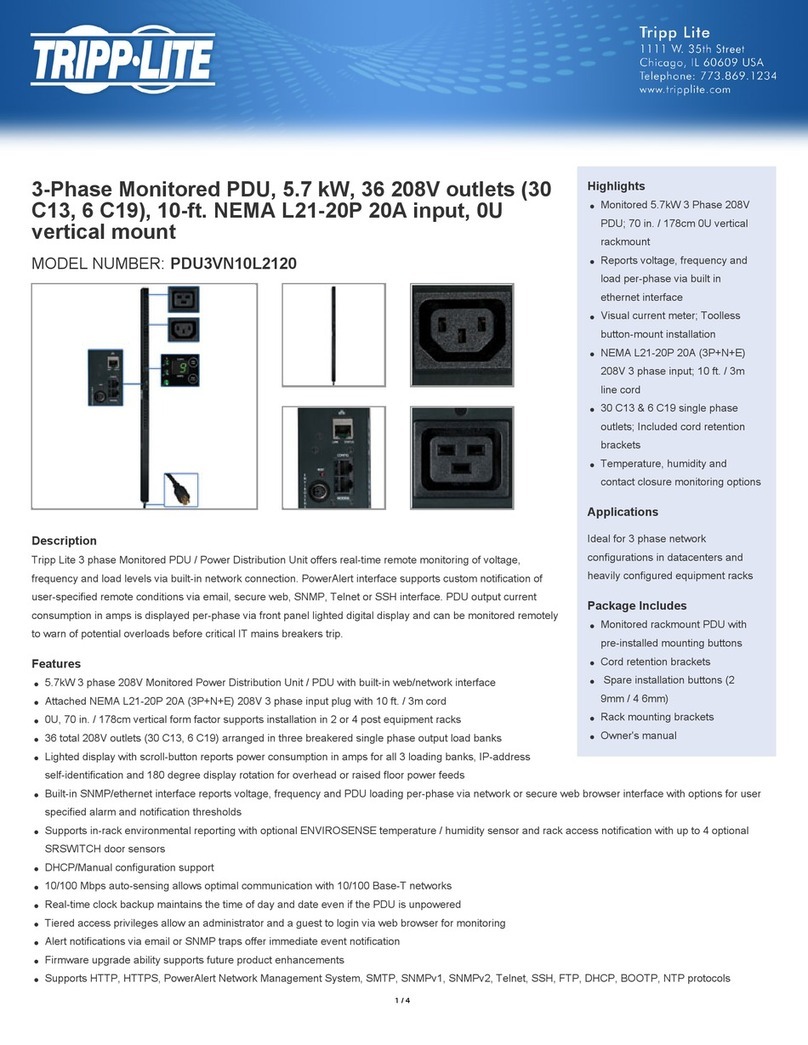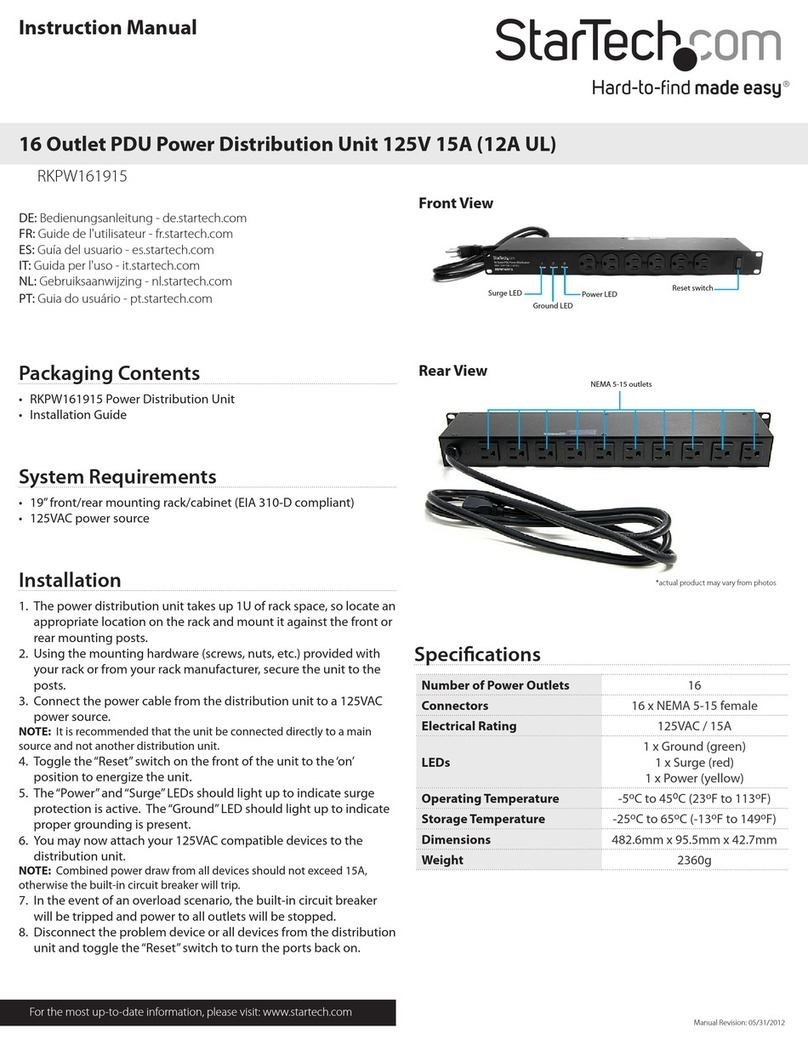FiDUS RHM250P Series Installation and operating instructions

1www.fiduspower.com
Model Number Output Power Output 1 Output 2(1,2) Efficiency(4)
Voltage Current Max Voltage Current Max
RHM25012P 250W 12V 20A 5V 2A 90%
RHM25015P 250W 15V 16A 5V 2A 90%
RHM25019P 250W 19V 12.63A 5V 2A 90%
RHM25024P 250W 24V 10A 5V 2A 91%
RHM25030P 250W 30V 8A 5V 2A 91%
RHM25036P 250W 36V 6.66A 5V 2A 92%
RHM25048P 250W 48V 5A 5V 2A 92%
Models & Ratings
Parameter Minimum Typical Maximum Units Notes & Conditions
AC Input range 90 264 VAC
Operating temperature -40 70 °C Derate linearly from 100% power at 50°C to 50%
power at 70°C
Efficiency 90 92 %
Dimensions 3 x 5 x 1.46” (76.2 x 127 x 37mm)
EMC EN55011 Level B conducted and radiated. EN61000-3 and EN61000-4, harmonics, flicker, Surge, EFT, ESD, conducted and
radiated. IEC 60601-1-2 4th Ed
Safety IEC60601-1 2006/A1:2013, ES60601-1:2005 (R2012), CSA-C22.2 No. 60601-1:14, EN60601-1:2006/A1:2013
Key specifications
RHM250P Series
Notes
• Power dense 250W in 3 x 5”
• Remote on/off and 5V stand by
• Latest medical approvals IEC 60601-1 (3.1) and IEC 60601-1-2 4th Ed
• Earth leakage <300uA (BF rated)
• EN55011 Level B conducted & radiated
• -40 to +70°C Operation
• 5 Year warranty
Dimensions:
3 x 5 x 1.46” (76.2 x 127 x 37mm)
250 Watts
The RHM250P series offers 250W in a dense, 3 x 5” open frame package. The units are designed for
use in medical applications, are very efficient and have low emissions, meeting EN55011 Level B.
They have a wide temperature range from -40 to +70°C and offer low no load power consumption of
<0.3W. Outputs are available from 12 to 48V and all models come with a FiDUS 5 year warranty.
INSTALLATION ADVICE PG5
1. Output 2: Standby Power 5V@2A
2. Output 2: Minimum load 0.3A
3. Looms kits available, see ‘Installation Advice’ pg5
4. Efficiency at full load and nominal line voltage

2www.fiduspower.com
RHM250P Series
Parameter Minimum Typical Maximum Units Notes & Conditions
Output voltage 12 48 VDC See Model & Ratings table
Total regulation % ±10% AC line change at nominal load and ±40%
load change at 60% load nominal line.
Output 1: ±5% 12-19V models. ±3% 24V model.
±2% 30-48V models.
Output 2: ±5% all models
Minimum load 0%
Ripple & Noise
Output 1: 12V model 120mVp-p. 15V model 150mVp-p.
19V model 190mVp-p. 24V model 240mVp-p.
30-48V models 300mVp-p.
Output 2: all models 50mVp-p
mV(Vp-p) All models measured with 0.1uF and 0.47uF
capacitor and 20 MHz bandwidth.
Hold up time 16 ms
Overload protection 105 130 %Trip and restart. Automatic recovery
Short circuit protection Trip and restart. Automatic recovery
Overvoltage protection 112 132 %Trip and restart. Automatic recovery
Output
Parameter Minimum Typical Maximum Units Notes & Conditions
Efficiency 90 92 %
Isolation: Input to Output 4000 VAC 2 x MOPP (BF rated)
Input to Ground 1500 VAC
Isolation resistance 50 MΩ
Power density 11.4 W/In3
MTBF 200 KHrs As per MIL-HDBK-217F, 25°C GB
Weight 350 g
General
Parameter Minimum Typical Maximum Units Notes & Conditions
Operating temperature -40 70 °C Derate linearly from 100% power at 50°C to 50%
power at 70°C
Storage temperature -40 85 °C
Cooling Convection cooled
Temperature coefficient ±0.04 %/ᵒC
Humidity 095 % RH Non condensing
Operating altitude 3000 m
Vibration 5g10-500hz, 10min/cycle in each axis x,y and z
Environmental
Parameter Minimum Typical Maximum Units Notes & Conditions
Input voltage 90 264 VAC
Input frequency 47 63 Hz
Power factor 0.9 EN61000-3-2 class A compliant
Input current (rms) 3A Low line. At 100VAC
1.5 High line. At 240VAC
Inrush current 75 A 100VAC cold start at 25°C
150 240VAC cold start at 25°C
No load input power 0.3 W
Earth leakage current 0.3 mA 240VAC 60Hz
Input

3www.fiduspower.com
RHM250P Series
Standard Test level Criteria Notes & Conditions
Conducted EN55011 B
Radiated EN55011 B
Harmonic current EN61000-3-2Class A
Voltage flicker EN61000-3-3
EMC: Emissions
Derating curve
Load %
0
80
100
-40 020 40 60 80
20
60
40
50
70
Temperature (ᵒC)
20 50
Standard Test level Criteria Notes & Conditions
ESD EN61000-4-24A±15kV air, ±8kV contact,
Radiated EN61000-4-33A10V/m 80% AM (1KHz) 80-2700MHz (6V for ISM &
amateur radio frequencies)
EFT EN61000-4-43A±2KV (100V and 240V 50Hz)
Surges EN61000-4-5Installation Class 3 A±2KV (100V and 240V 50Hz) ±1KV L-N
Conducted EN61000-4-63/6Vrms A80% AM (1KHz)
Magnetic Fields EN61000-4-830A/m A50/60Hz 1 min
Voltage Dips EN61000-4-11 100% for 0.5 cycles, 60% 5 cycles, 30% for 25/30 cycles, interrupt 250/300 cycles and 1 sec -
performance criteria A, A, B
EMC: Immunity
Safety standard Notes & Conditions
UL ES 60601-1:2005 (R2012),
CSA-C22.2 No 60601-1:14
CB IEC 60601-1 2005 + A1 (Ed 3.1)
TUV EN 60601-1:2006 + A1: 2013
CE 2011/65/EU RoHS Directive and 2014/35/EU Low voltage directive
Means of patient protection
Input to Output: 2 x MOPP
Input to Ground: 1 x MOPP
Output to Ground: 1 x MOPP
Equipment protection class Class I
Safety Approvals

4www.fiduspower.com
RHM250P Series
Notes
Mechanical Details
*Note: Enable output 1 by shorting PIN 2 and
PIN 3. Output 3 floating or shorted to 1 unit is off
2. AC input header mates with JST VHR-5N
P4 - Pin Connections
Pin Function
1COM
2Output 2
3ON/OFF
1. All dimensions shown in millimetres (inches)
4. Standby power output connector mates with JST housing XHP-3 and JST SXH series crimp terminals
Input Pin Connections P1
Pin Function
1Ground
2Neutral
3Line
Output Pin Connections
Pin Function
P2 Vout
P3 Return
3. DC output M3 screws torque to 3 lb-in (30 CNm) max.

5www.fiduspower.com
Thermal
Thermal management is an important consideration when thinking about equipment service life. Electrolytic
capacitors within the PSU wear with time and are typically the first end-of-life failure. Keeping the operation
temperature of key components within the PSU, such as the electrolytic capacitors, as low as possible is para-
mount. As a general rule, for every 10°C drop in the operating temperature of the electrolytic capacitators you
double their lifetime, and thus the lifetime of the power supply. When looking at thermal performance it is helpful
to test under a worst-case set of conditions, to ensure component temperatures are in an acceptable range for
the required service life. Then consider the impact of operational time, load and temperature profile to estimate
a more realistic lifetime for your PSU.
Also, many FiDUS power supplies offer a Peak Power rating to provide for customers with pulsing loads. When
using a peak power capability customers must consider:
1) Peak duration rating: the maximum length of time the peak can be drawn for
2) Duty cycle: the frequency with which the peak can be drawn. (e.g. 10% duty cycle, 1 second on:9 seconds
off)
3) Average power value: datasheets will state the maximum average power acceptable with peak power PSUs.
If any of these elements are exceeded the supply may overheat, with performance and lifetime suffering as a
result.
Installation Advice
Conducted and radiated emissions compliance is a common application consideration. It is important to remem-
ber that even when using a properly filtered PSU, an application may still not achieve compliance if it is not de-
signed to minimise emissions. That being said, there are a number of things that can be done to optimise EMC
performance either as best practice, or if you are struggling for compliance:
1) Connect all marked EMI ground points to earth. Often these are combined with the safety earth point (in class
I installations), but on some power supplies there may be additional earth tags or mounting points.
2) Minimise the length of input/output wiring where possible and try to maintain max distance of the conductors
from the PSU, to prevent noise pick up. Avoid bundling input and output cables together. A common component
to avoid placing wiring near is the PFC inductor in power factor corrected power supplies.
3) Apply additional filtering before the PSU input (ensure consideration of which frequencies there are issues
with before selecting a filter).
4) When using an open frame PSU, mount the supply on a metal plate and connect EMI mounting points.
5) In multi circuit systems, decouple the circuits locally.
6) Ferrites added between the PSU and system input connector and/or the DC output cables can help in reduc-
ing radiated noise issues in systems. If seen, issues are commonly in the 30-150MHz area.
For more detailed assistance, if you still have any concerns with compliance, please get in contact with our Engi-
neering department who are on hand to assist with any queries.
EMC
On installation customers must consider the required creepage and clearance distances between the PSU and
the end-equipment enclosure. These distances vary depending on the installation class and safety standard
requirements.
For Class I installations there should be 3-4mm between any part of the PSU and any earthed metal part of the
enclosure. 3mm is acceptable for IT applications, 4mm required for medical applications. In Class I installations
the PSU earth point must be connected to system safety ground.
For Class II installations distances may need to be increased if being installed into a surrounding metal enclo-
sure.
Ensure consideration of components on the underside of the PCB or low lying spills when measuring clearance
distances between the PSU and the end-equipment. Also top surface especially in tight enclosures such as 1U
boxes. An insulation material can be used between PSU and metal if smaller gap required.
FiDUS recommends installing the PSU on 6mm stand offs typically, but check the distances.
Safety
All FiDUS Power engineering samples requested will arrive with a free of charge loom kit for ease of testing.
The loom kit connects to the input/output terminals of the PSU and provides the customer with bare wire ends to
connect with.
The loom kits can also prove advantageous
for ease of installation in production. Please
contact sales if you are interested in includ-
ing the loom kit in your quotation.
Alternatively the input/output connector and
mating part details can be found in the
attached table.
Part Number Mating Part Number
Input B5P-VH VHR5N
Output M3 screw terminal N/A
Loom Kit RHM250 LK
Connectivity
RHM250P Series
20/05/20
This manual suits for next models
7
Table of contents
Other FiDUS Power Distribution Unit manuals
Popular Power Distribution Unit manuals by other brands

EuroLite
EuroLite SB-66 user manual
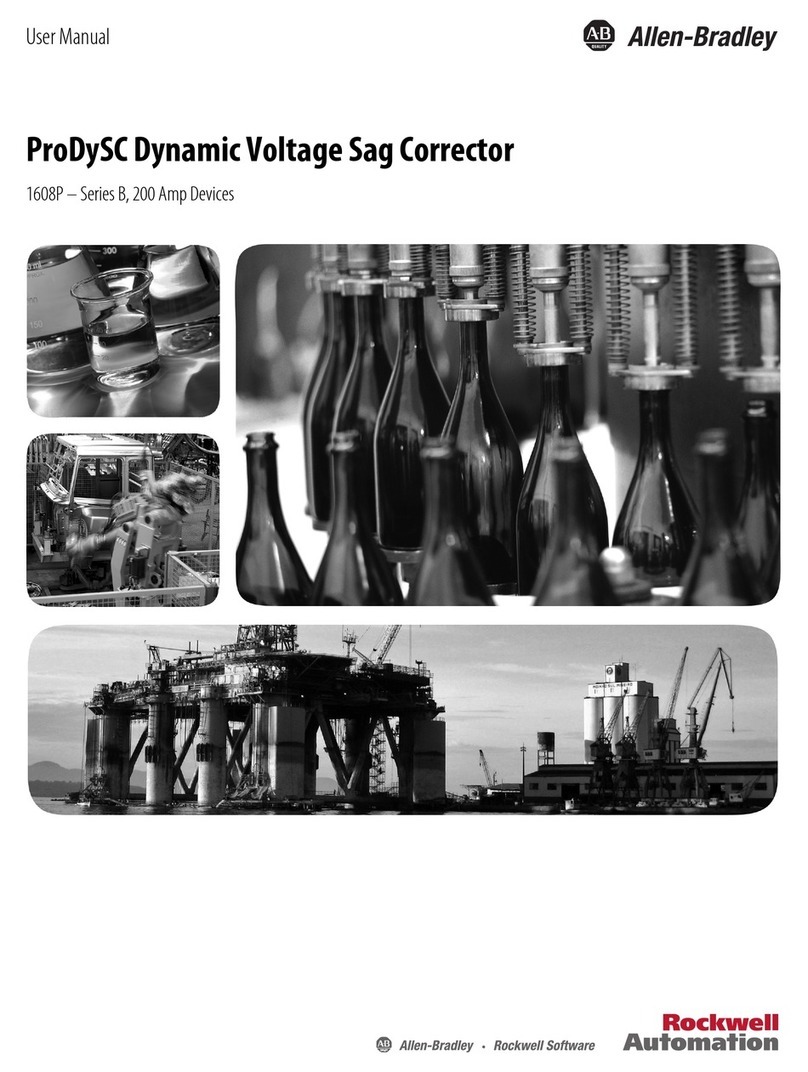
Rockwell Automation
Rockwell Automation Allen-Bradley B Series user manual
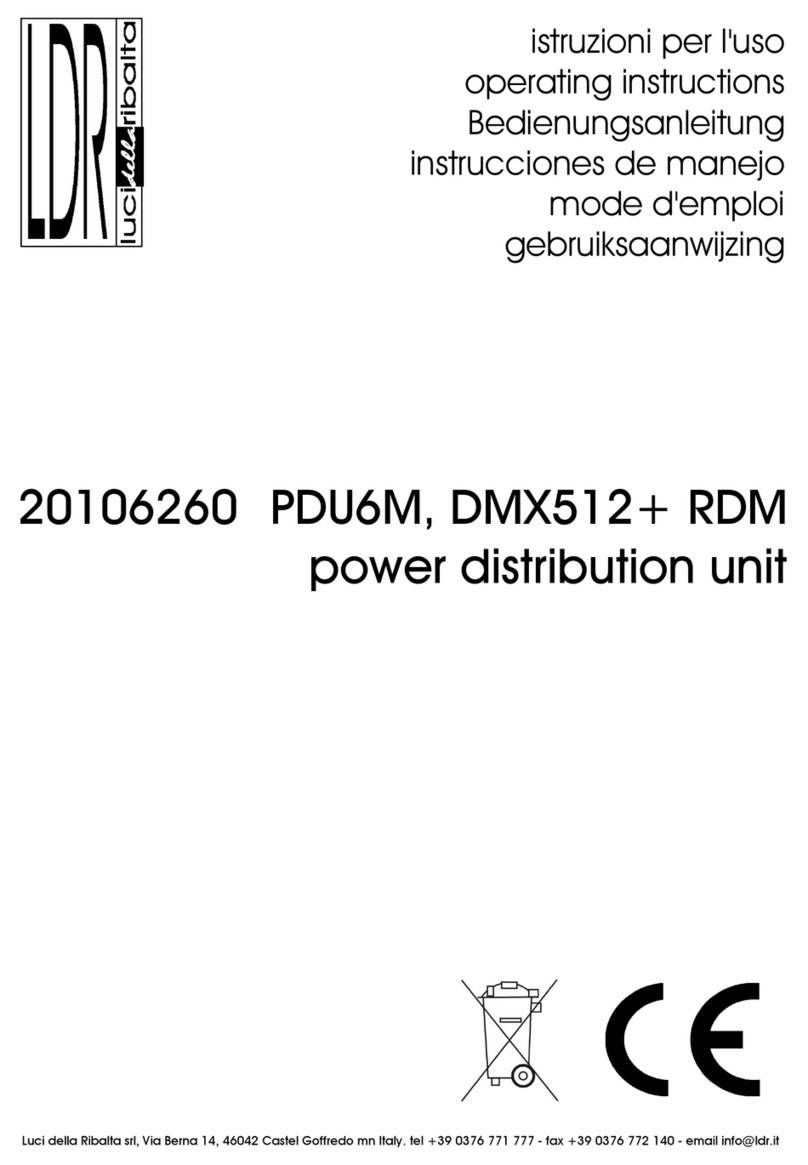
LDR
LDR PDU6M operating instructions

GÜDE
GÜDE Expert Power Control 8031 Series manual
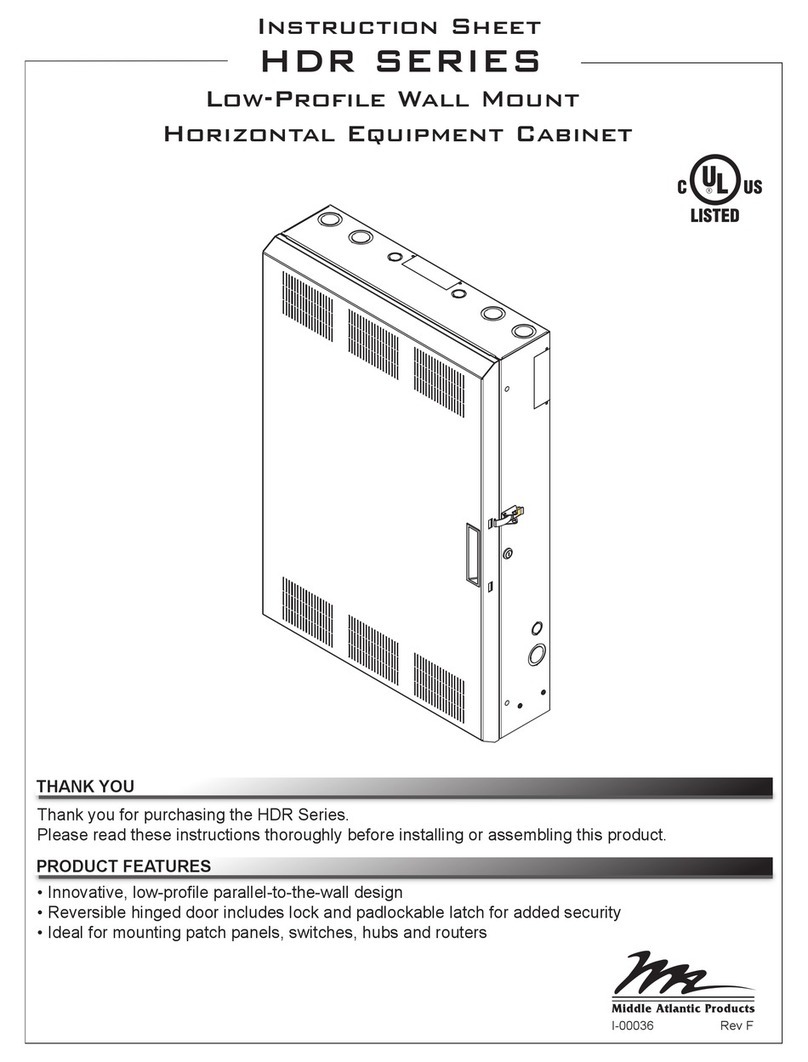
Middle Atlantic Products
Middle Atlantic Products HDR Series instruction sheet
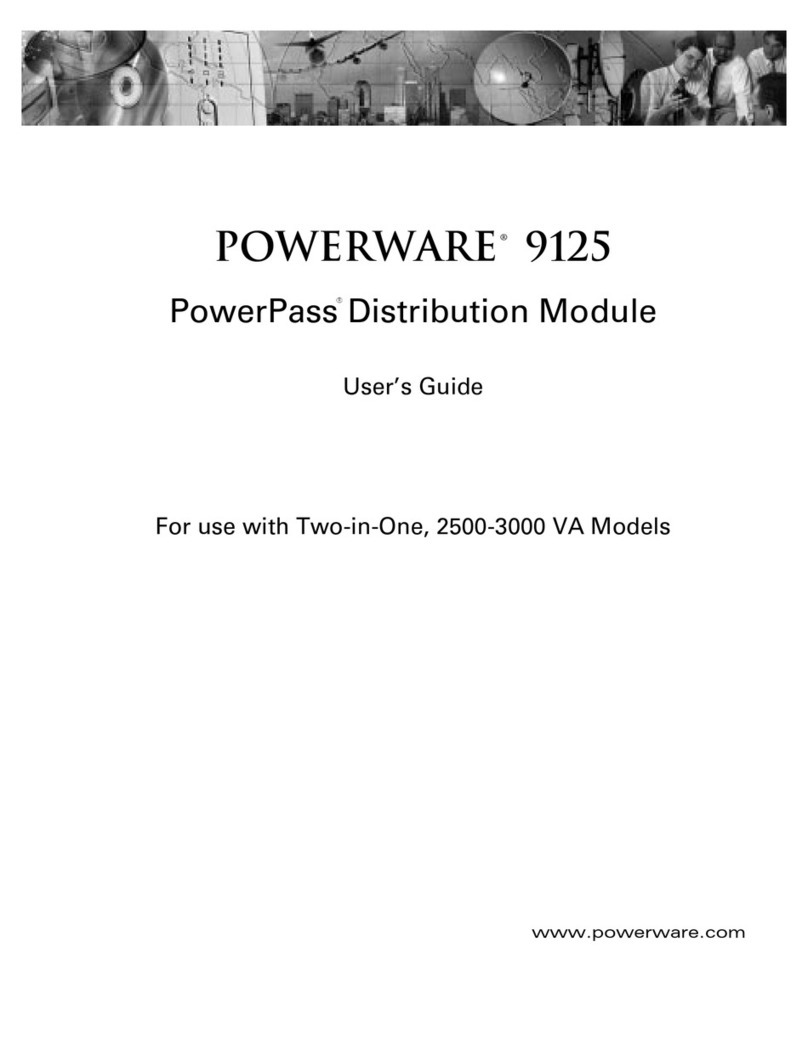
Powerware
Powerware 9125 user guide
